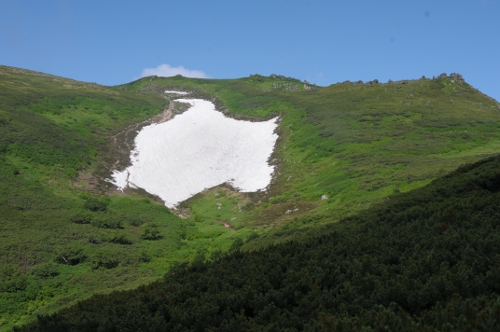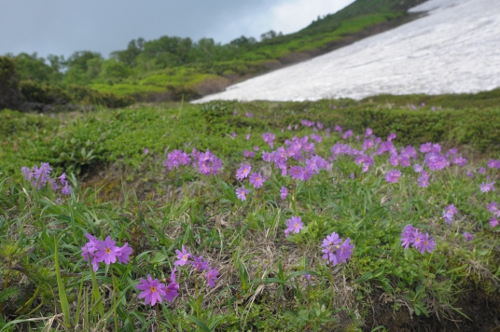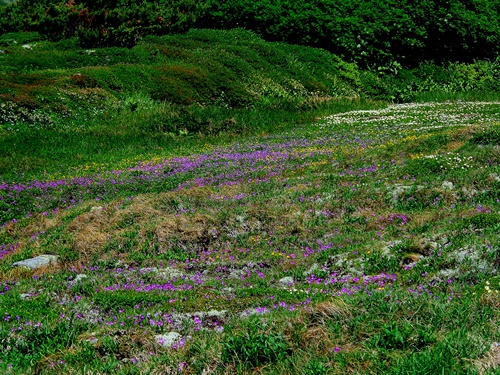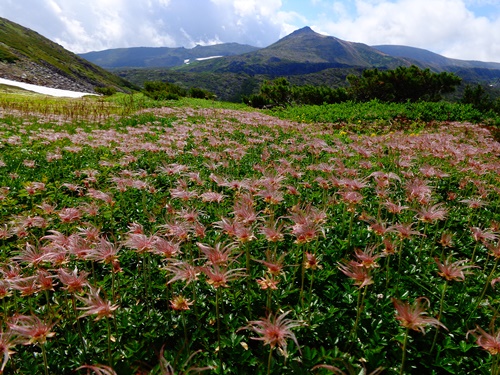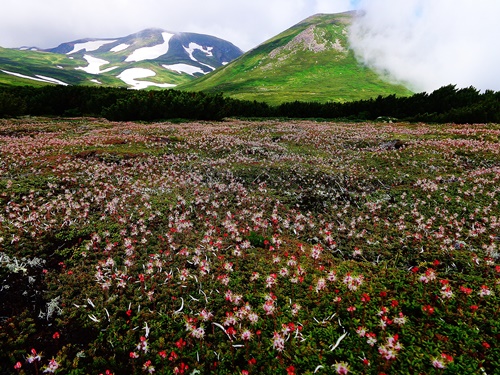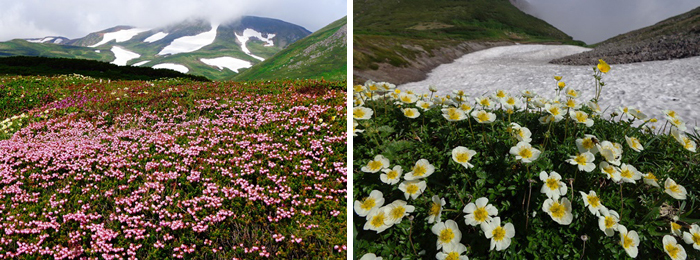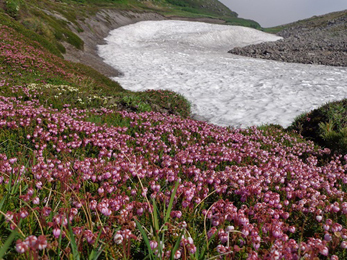On the Mt. Aka course trail, a snowy gorge of roughly 12 meters remains in front of the Daiichi Kaen woodland; however, a snowy gorge that existed before the sign and below the viewing platform has completely disappeared.
At Daini Kaen, a snowy gorge of about 110 meters remains. And at Daisan Sekkei, a snowy gorge of roughly 120 meters remains from the middle to lower area. The snow’s surface is firmly packed and fairly difficult to climb.
The snowy gorge on the trail at Daiyon Sekkei has completely melted.
Photo: View of Daisan Sekkei, Mt. Aka Jul. 24
At Daini Kaen, a snowy gorge of about 110 meters remains. And at Daisan Sekkei, a snowy gorge of roughly 120 meters remains from the middle to lower area. The snow’s surface is firmly packed and fairly difficult to climb.
The snowy gorge on the trail at Daiyon Sekkei has completely melted.
Photo: View of Daisan Sekkei, Mt. Aka Jul. 24
